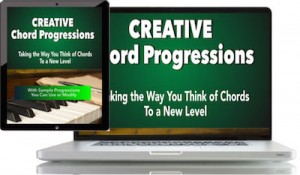If you ask someone what they like about a song melody that they love, they’ll usually mention one or more of the following:
- It’s got a nice contour that explores a large range, from low to high.
- It’s got a moment (the so-called climactic moment) that acts as a point of focus for the entire tune.
- It’s easy to remember.
- It’s fun or otherwise enjoyable to sing.
- It brings the lyric alive.
Those aren’t the only things people might like about a melody, of course, and any good melody might not have all of those qualities.
And here’s another point: not every song is about the melody. Many songs make do with a melody that has a constricted range, or perhaps doesn’t really have a climactic moment.
 For those songs, where the melody sits a bit in the background, not really getting attention (“My Sharona”, written by Doug Fieger and Berton Averre, and recorded by The Knack in 1979, might be a good example) — how do such songs succeed?
For those songs, where the melody sits a bit in the background, not really getting attention (“My Sharona”, written by Doug Fieger and Berton Averre, and recorded by The Knack in 1979, might be a good example) — how do such songs succeed?
How does a song with a rather shapeless melody still manage to become a big hit? (“My Sharona” was the top song on the Billboard Hot 100 for 1979).
Here are some thoughts on that:
- Songs that use melodies that don’t have a lot of shape or points of interest need to use rhythm, either as a background hook, or even as part of the rhythm of the melody.
- Lyrics usually need to step up and be enticing and somehow noticeable.
- Instrumentation and production issues become important front-end partners in songs with static melodies.
- A chord progression can become more important in songs that don’t have a melody that grabs attention.
Of those four points, the first three probably describe the success of “My Sharona.”
In your own songs, don’t stress over a melody that seems to be lacklustre or shapeless. Not every song needs that kind of melody.
But without a melody to grab attention, remember that your audience needs something that does, and does so rather immediately. If your melody isn’t that element, it’s important to listen objectively to your songs and ask yourself:
- What is it that will make people want to listen to this song.
- What is happening within the lyric that the audience will find enticing.
- What is happening instrumentally that can replace the interest-factor we normally find with a well-shaped melody?
Remember that a good song is a partnership of components, all working together. In every song, at least one of those many elements will be required to do the heavy lifting. Not every element needs to do that. So it’s not a problem that your song melody seems flat or static, as long as other elements have stepped forward to please the audience.
 Written by Gary Ewer. Follow Gary on Twitter
Written by Gary Ewer. Follow Gary on Twitter
 Are you looking for ways to make your progressions more creative? Tired of the same-old, same-old? This eBook, “Creative Chord Progressions“, is being offered free with your purchase of “The Essential Secrets of Songwriting” 10-eBook Bundle. Read more.
Are you looking for ways to make your progressions more creative? Tired of the same-old, same-old? This eBook, “Creative Chord Progressions“, is being offered free with your purchase of “The Essential Secrets of Songwriting” 10-eBook Bundle. Read more.











Pingback: About Those Songs That Don’t Seem to Have a Catchy Shape - The Hit Songwriting Formula | The Hit Songwriting Formula